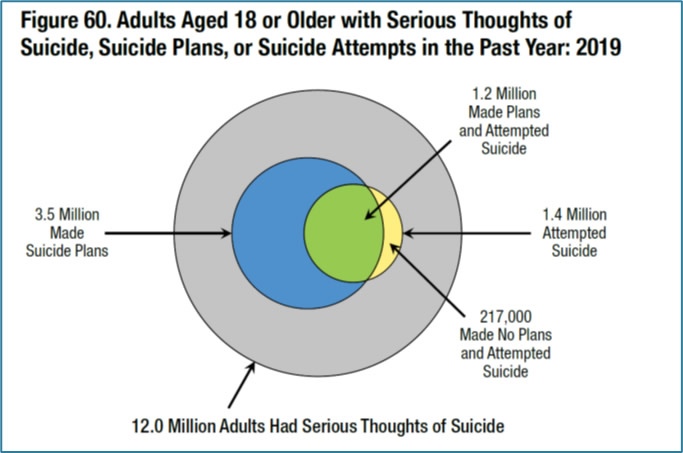Hope is such a simple word. Yet for suicidal people in the depths of despair, hope is a beacon that they crave more than anything – but abjectly fear, because to believe in hope means to risk catastrophic disappointment. What I have come to learn over my decades in suicide prevention is that hope is everything to finding a way out of suicidal hell and into a life worth living with purpose and meaning.
There is a recent study of CAMS that I will be talking and writing about for years to come. For now, I will await publication of the investigation before saying more. But one of the key findings that most warmed my heart was how hope is engendered in suicidal patients engaged in CAMS.
Indeed, we know across clinical trials of CAMS that hopelessness is reliably decreased over the course of care while hope—and even optimism—is generated by the intervention as well. I know hope when I see it, and sparks of hope routinely occur at certain key moments across CAMS sessions. Within the first session of CAMS when the clinician and patient collaboratively complete the initial Suicide Status Form assessment there are often tiny sparks of hope. As the patient warily rates and describes elements of their struggle and the empathic clinician listens, validates, and actually gets what they are describing, there can be a glimmer of hope. When the clinician helps the patient elaborate the struggle and does not judge them, shame them, or ever wag a finger, there can be a flash of hope. When the clinician candidly speaks to the goal of keeping even a relatively highly suicidal person out of the hospital (if at all possible), there can be a spark of hope. So you are not going to try to get rid of me and lock me up?.
When the dyad carefully develops the CAMS Stabilization Plan for the patient and the clinician notes that the patient can learn to cope differently without resorting to suicide, there is often a curious look and sometime a twinkle of hope. Perhaps most dramatically, when the dyad completes the initial CAMS Treatment Plan in which the patient’s own suicidal “drivers” are identified (i.e., issues and problems that compel the patient to entertain suicide), goals and objectives are set, and potential interventions to target and treat those very drivers are noted, there is often an unmistakable flash of hope in the patients eyes. “Can you really treat these problems?” says an incredulous patient. In turn, the clinician replies, “…yes, of course we treat these problems all the time and if we do so successfully with you, perhaps you will come to see that you don’t need to end your life.” This is how CAMS-inspired hope may emerge in a first session.
My Suicide Prevention Lab (SPL) at Catholic University has been dedicated to many suicide prevention-oriented studies over many years. But one of the biggest tasks of the SPL my graduate students and I undertake is the fidelity and adherence work that we routinely do as part of clinical trials of CAMS. Fidelity is a solemn obligation within clinical trial research that requires that research investigators ensure that experimental and control treatments are indeed different from each other.
For example, within a CAMS randomized controlled trial (RCT) that means clinicians in the CAMS arm of the trial are doing the intervention adherently (as it was designed to be used) and clinicians in the control arm of the trial are not doing CAMS and are adherently providing the comparison treatment (e.g., usual treatment or Dialectical Behavior Therapy within our trials).
Here is the point: our job in these RCTs is to watch a lot of digital recordings of clinicians doing CAMS and often watching control sessions to ensure that the control treatment is being done properly. In other words, this fidelity work means we watch hundreds of hours of therapy sessions with suicidal people who are willing to participate in a RCT. It is from this perspective that my trained eye has come to recognize the behavioral, verbal, and emotional indicators of hope.
Hope is sometimes reflected in the almost shy glance that a patient makes towards the clinician—it is a look that says, are you for real? Can I trust you? Do you really mean it when you say you care about me? In later interim sessions of CAMS, hope is seen in a patient who sits up just a little straighter than they did in earlier sessions and who is genuinely interested in the clinician’s comments and input on their life and death struggle. Hope is seen in the flicker of smiles between patient and therapist as the dyad reviews “a good week.” Hope is often seen in an outcome-disposition session that formally draws CAMS to a close, wherein both parties reflect on how far they have come, appreciating and taking stock of gains made, and look forward to the road ahead in the patient’s “post-suicidal life.”
While the quantitative clinical trial results are robust, we know that decreasing hopelessness and increasing hope within CAMS is the lifeblood of a successful course of CAMS-guided care. Hope is simply the remedy to suicidal despair, desolation, despondency. And when you have seen the spark of hope in the eyes of suicidal person, you will never forget it. It is as if an entire inexorable fatal world view has been paused, gradually reconsidered, and even transformed into a world of potential possibilities.
In truth, hope does not happen every time with every patient. But within adherently provided CAMS we know that hope happens more often than not, and when hope happens truly anything is possible.
Such a simple word, hope, but in the suicide prevention and life-worth-living business it speaks volumes.


